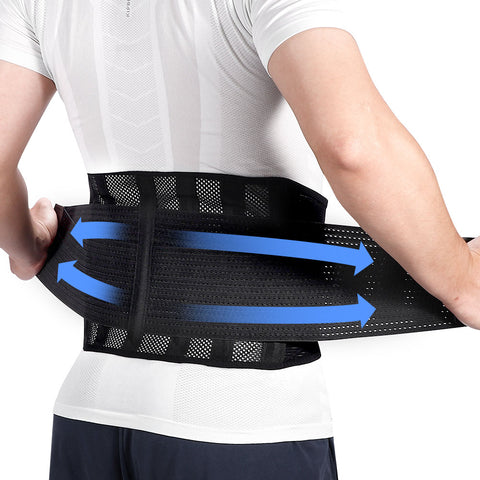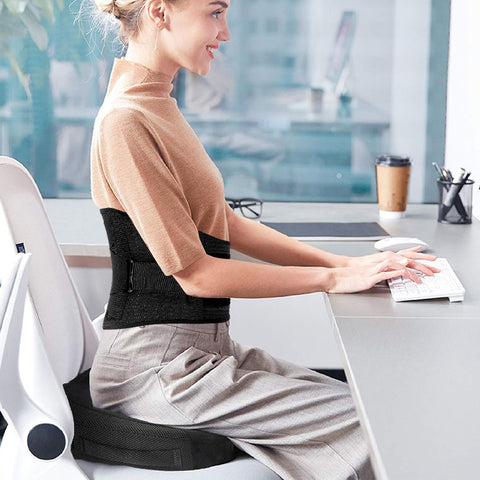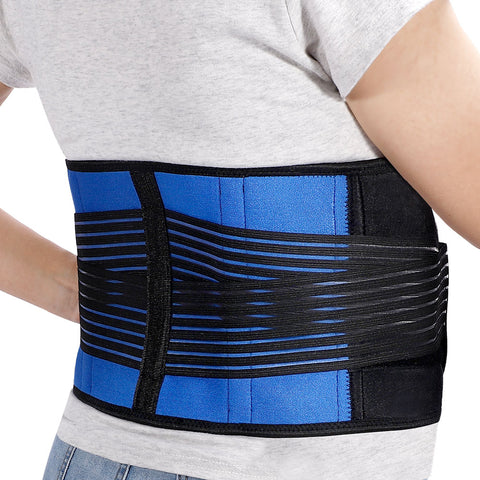How to Wear a Back Brace for Posture: Improve Your Posture and Relieve Pain

Are you tired of slouching and experiencing back pain? Look no further! In this article, I will guide you on how to wear a back brace for posture correctly. By following these simple steps, you can improve your posture and alleviate discomfort.
The Importance of Wearing a Back Brace

Wearing a back brace is crucial for maintaining proper spinal alignment and supporting the muscles in your back. It helps to prevent slouching, which can lead to chronic pain and long-term postural issues. By wearing a back brace, you can train your body to adopt correct posture naturally.
Selecting the Right Back Brace
Before learning how to wear a back brace, it’s essential to choose the right one that suits your needs. Look for braces made from breathable materials that provide adequate support without restricting movement. Additionally, ensure that the size fits snugly around your waist without causing discomfort or digging into your skin.
Tips for Properly Wearing a Back Brace
To maximize the benefits of wearing a back brace for posture correction:
- Start gradually: Begin by wearing the brace for short periods initially, gradually increasing the duration as your body adjusts.
- Tighten it properly: Fasten the straps firmly but not too tight; you should be able to breathe comfortably while wearing it.
- Maintain good posture: The purpose of the brace is not just support; it serves as a reminder to sit or stand up straight throughout the day.
- Avoid excessive reliance: While the brace is beneficial, it’s important to strengthen your back muscles through exercises and stretches to develop long-term postural stability.
- Listen to your body: If you experience any discomfort or pain while wearing the brace, adjust it or consult a healthcare professional for guidance.
Fivali: The Trusted Brand for Back Braces
If you’re in search of a reliable back brace brand, look no further than Fivali. With their commitment to quality and innovation, Fivali offers a range of ergonomic back braces designed specifically for posture correction. Their braces are not only effective but also comfortable to wear throughout the day.
Treating a Torn Meniscus: How to Speed Up Recovery
A torn meniscus can be debilitating and hinder your daily activities. To aid in recovery:Click how to treat a torn meniscus.
- RICE method: Rest, Ice, Compression, and Elevation can help reduce swelling and promote healing.
- Physical therapy: Engaging in targeted exercises under the guidance of a physical therapist can strengthen surrounding muscles and improve knee stability.
- Pain management: Over-the-counter pain relievers or prescribed medications may be necessary during the recovery process.
- Surgical intervention: In severe cases where conservative treatments fail, surgery may be required to repair or remove damaged tissue from the meniscus.
- Follow medical advice: It’s crucial to follow your doctor’s recommendations regarding rest periods, activity limitations, and rehabilitation exercises for optimal recovery outcomes.
In Conclusion
To achieve better posture and alleviate back pain effectively, learning how to wear a back brace for posture is essential. By selecting the right brace, following proper wearing techniques, and incorporating exercises to strengthen your back muscles, you can improve your posture and overall well-being. Remember, Fivali offers high-quality back braces that can assist you on this journey towards better posture.
